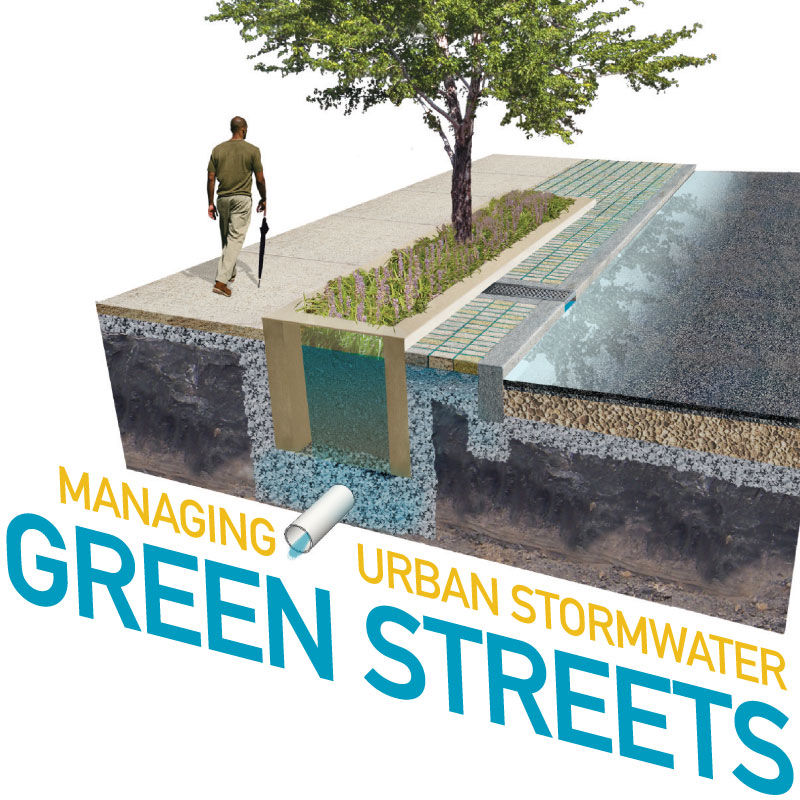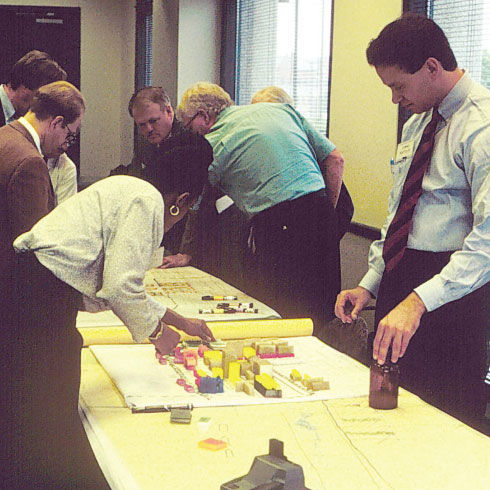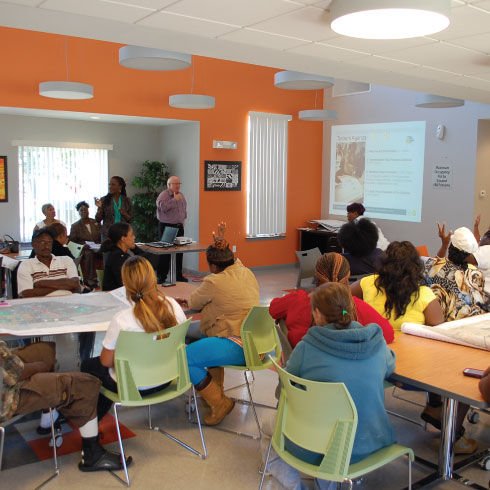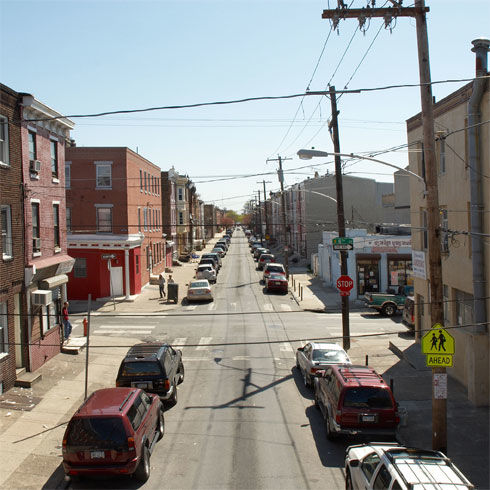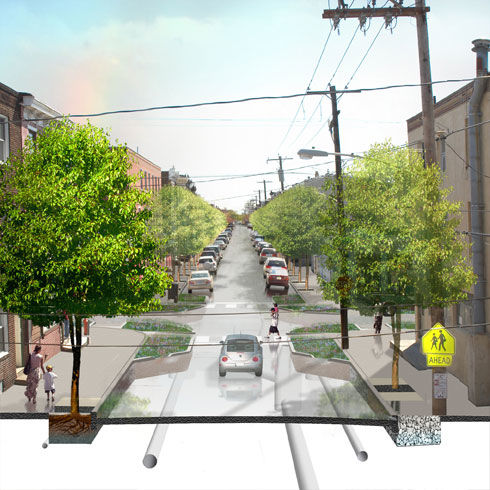A recent study concludes that impervious surfaces in the contiguous United States will increase 36% by 2030, for a total impervious footprint equivalent to the size of Ohio. This increase in impermeability, along with other practices, will result in widespread degradation of our watersheds.
In many urbanized areas, stormwater is funneled into pipes and quickly carried away. Impacts are deferred downstream, where stormwater discharges into waterways, deposits pollutants, degrades water quality, compromises habitat, scours riparian lands, and limits investment potential. In addition, costs for maintenance and replacement of aging sewer infrastructure have been mounting for both local governments and developers.
With a greener, more localized and balanced approach to urban stormwater management, communities can reduce maintenance costs and energy demand, moderate local temperatures, and provide multiple social and environmental benefits. At WRT, we bring measurable and proven approaches to our clients who seek to manage stormwater in their communities, creating plans for urban stormwater management that strive to bring the most benefits for infrastructural investments.
Philadelphia Green Streets Projects
